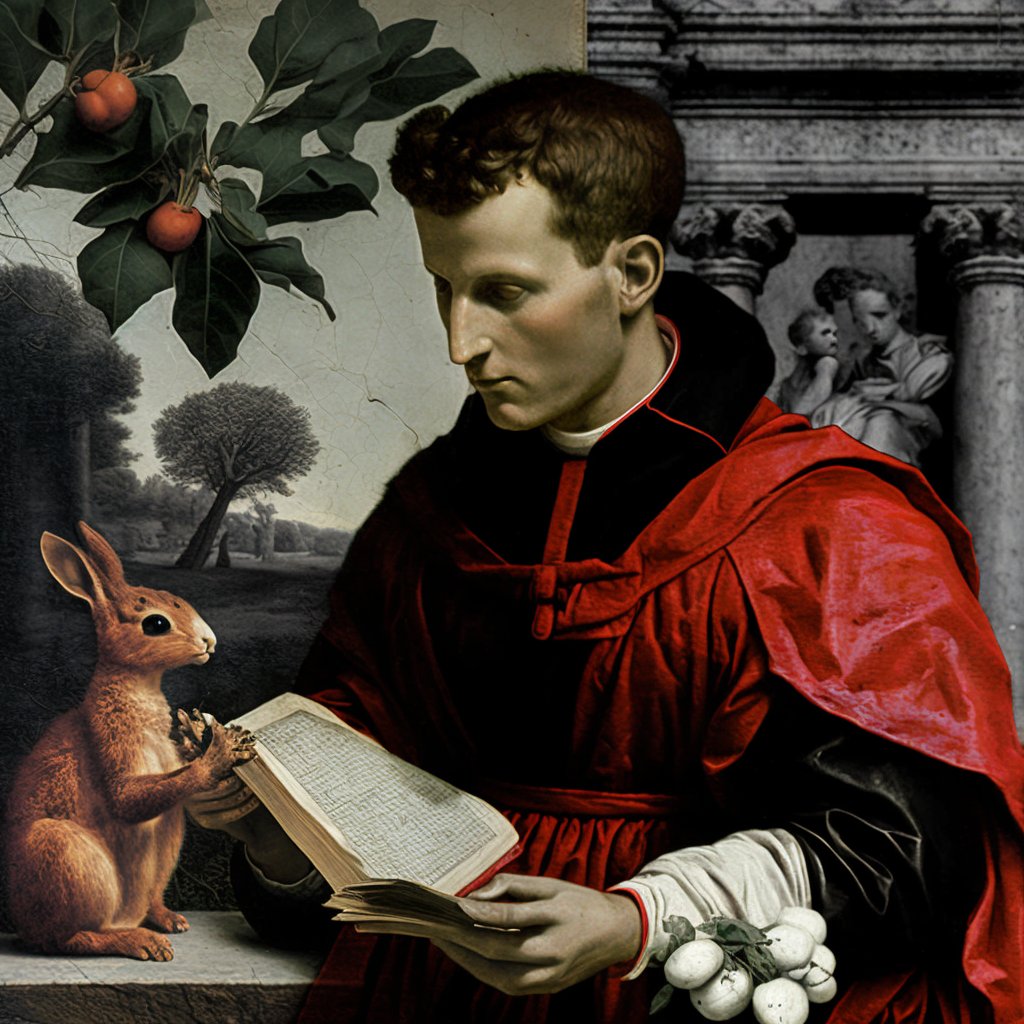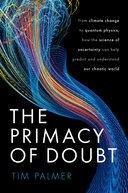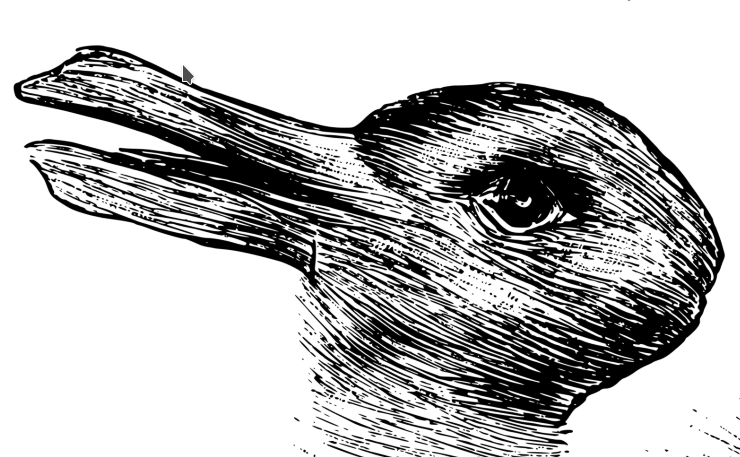
Social mediation… —Primary doubt ① & ②
First posted on substack 25 March 2023.
Review of Tim Palmer's The Primacy of Doubt

As a librarian it is part of my calling to bring attention to readers books that they may not be aware of, but would be of interest or use to the reader. This is mostly done through the use of professional empathy, and especially allow books to find audiences who may not at first sight consider them. This is one such work.
Tim Palmer’sThe Primacy of Doubt: From Climate Change to Quantum Physics, How the Science of Uncertainty Can Help Predict and Understand Our Chaotic World, (New York: Oxford University Press, 2022) #9780192843593
It is also a good update for those who are aware of these topics mentioned in the subtitle.
Towards the end of the preface, tucked in safely ahead of the main text, Tim Palmer places The Primacy of Doubt within a defining intensification:
- doubt as that state of being uncertain
- doubt as actively questioning a particular claim
The book is mostly about number ① or being alive. From the very last lines of the preface, (before the real book begins to release the lessons learned from chaos theory) we have:
“For yet others, reading the book may help them understand themselves better. Not least that they may come to realise that some of our apparent shortcomings are not signs of irrationality or failure, but manifestations of our unique ability to cope with enormous uncertainties of life.”
And then there are some words on hope, but I’ll put that aside for my to-be-written piece on hope and the world… —worldbuilding— worlding… hopefully once I get all the stuff on (the… —gap) out of the way. (23 July 2024 still not written really.)
Asides for the neo-Pyrrhonists
For the neo-Pyrrhonists coming out from a more soteriological experience and practice, (Buddhism), I suggest Palmer's book is a good way to connect out and across… —with the sciences of uncertainty and their techniques of doubt as uncertainty. As well as with the parallels… dare I say modish parallels… with why one might suspend judgment, in order to ‘educate’ judgement. There is no guiding practice per se here in Palmer, however, practical weather forecasting _is_ a geometry of chaos.
For the neo-Pyrrhonists coming out of more scholarly discussions (that appear to me to mostly arise from, say, the lack of punctuation in the Greek or Latin originals) I mean as much as I enjoy them, it’s a bit like watching sausages being made, very dry sausages. But you know maybe sawdust is vegan, I don’t know. —- For them perhaps a certain relief or distraction is at hand.
However, looking in the index Pyrrho does not get a mention, while Pythagoras and Putin get one each.
What I like about the Tim Palmer’s book is the epistemological acknowledgement of suspension (① doubt above ) as an active creative state of mind. Not just ataraxia as that enlightenment/relief/ thang.
actively questioning a particular claim
This second part in this post is not a reaction or review but a question about that number ② doubt as actively questioning a particular claim. Tim Palmer’s book is not about that at all, it is excluded in the preface.
My concern with the Pyrrhonistic modes, is not their logic, not their grammar, not their translation issues, not the nitpicky what exactly does this version of a translation of what-his-names’ use of Timon’s words regarding the original text now lost… —imply for some other… —whatever.
Not that this textually scholarly discussion has no value, but I’d like to query more the social context where the use of the modes in the antiquity was made (the platform as we might say now, if not the prompt) and what that has to do (perhaps) with our modern and perhaps modish sciences of uncertainty.
Particularly where the modes were used in ancent days in a social context to open up a space (literally rhetorically speaking) in which to perform a pyrrhonism-style advocacy. Particularly if one considers that ancient social context is perhaps a lot like modern social media (platforms/opportunities).
I.E. the social context of the use and origins of the modes five or ten, with or without ataraxia, with or without boosting ataraxia as a guide.
So back to ② doubt as actively questioning a particular claim: my hypothesis is that this is primarily a political act.
Here, ‘primarily’ means it is originary to politics, not that doubt itself is primarily political i.e. not doubt as near to only political in usage. It is a call to warn, a call to action.
I.E. ② can do many things but for politics it is as important in use to exclude as it is to include, and being lazy/efficient we like to make the same action do both, and so the structure of categories is quite appealing to class people into castes and types and influences.
Ghibelline or Guelf
friends/minions/allies/enemies/races/gods/heroes/reels/eheretics/untouchables
And to blame/credit people when they do not fit into the preferred categories, especially when co-ordination is required among competitors to stage the competition, without appearing to co-operate.
Doubt in social contexts ②, often seeks to corral the doubt of the living person ① into the practice of power.
Primary binary political actors like narcissists love to include (ally building) by excluding (denigrating traitors or playing the victim of the 'them' and often both of these at the same time). They love to make themselves everybody’s pool of attention, inconsistency and incoherence are no both to them if these can be maintained. Thus there pathways to power generated simply by talking a lot (gish gallop), especially by using rhetorical devices which confuses ① with ② and is motivated by a perceived political gain or defense. They will subsume ① to ②.
No doubt we are currently seeing the aggregation of these conflated doubt into social media platforms. In the ensuing confusion of truth versus slur they will surf the chaos, if we let them.
We need to develop (as neo-Pyrrhonists) a suspension of doubt as an act of inquiry, not just suspension of judgment in order to forestall the chaos of certainty & dogma.
Recent examples of the rhetorics of the sowing of doubt defined in ② include:
- sealioning ( a fav of some narcissists I’ve met recently)
- whataboutism
- false balance
- tu-quoque to meta-whataboutism
When done by state actors the current strategies employing these tactics are to attack trust itself and surf the chaos that ensues, and not necessarily to gain the trust of agents or allies per se. A way of playing high stakes poker while wearing a clown mask.
My question is this, can anyone give me any leads on work done on ancient and modern rhetorics with reference to pyrrhonism’s modes in a social/political context?
What is the social practice of neo-pyrrhonism?
‘Trust the past’ may not be available.
There is a follow up to this book reaction at Why we praise primacy… —the creative doubt Review reaction remix of books on doubt and "believe"
